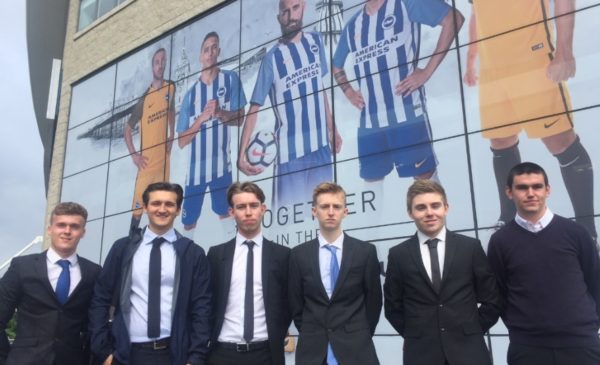By Menelik Ford
Google the Lawn Tennis Association (LTA) board and you will find that the chairman and most of the members are white. Rather ironic considering professional tennis is not very diverse and lacks black British players.
Only six black tennis male players and six black female tennis players are ranked inside the world’s top 100 according to the Women’s Tennis Association and Association of Professional Tennis. None of these players are British. In the men’s game, black American, Frances Tiafoe is one of the six players, while on the women’s side, five of the six: Serena Williams, Sloane Stephens, Venus Williams, Cori Gauff and Taylor Townsend are American. The States is home to a small but successful group of black tennis players, but across the pond in the UK, this is far from the case.
Participation of black tennis players on the professional tour has always been low. Since 1956 when American Althea Gibson became the first black player to win a Grand Slam, only a handful of black players have risen to the top of the game. American star, Serena Williams has been the most successful as she has captured a professional record 23 Grand Slams and Williams is aware of the struggles that Gibson faced as a black woman in a predominantly white sport. In a 2009 autobiography, Williams recalled the racist abuse that she suffered from fans in the 2001 Indian Wells final against Kim Clijsters. She alluded to the influence that Gibson had on her during that infamous match. “Okay, Serena. You need to be tough. I thought if Althea Gibson could fight her way through far worse, I had no obligation to fight through this,” Williams wrote in her biography. Williams has also said that “Gibson paved the way for women of colour in sport,” as Gibson overcame racial discrimination in the 1940s and became the first black player to compete at a Grand Slam in 1950.
Gibson was an inspiration for Serena Williams, and both Serena Williams and her sister Venus Williams have inspired young black American players such as Cori Gauff and Sloane Stephens in recent years. After her stunning victory over Venus Williams at the 2019 Wimbledon championships, Gauff, 16, said: “I wouldn’t be here if it wasn’t for her [Venus Williams]. ” Stephens has said: “Serena’s done so much for the sport, especially young black girls. ” Have the Williams Sisters contributed to the success of black American players? Just how important are role models in attracting more black players to the game?
Race scholar, Daniel Burdsey gave me his view on why there are not many black British tennis players. “ I think it’s probably to do with a lack role models. Of course, there have been some really key black tennis players from Althea Gibson to Arthur Ashe. But generally young black people are probably thinking is there a place for me in this sport? Do I see people like me represented at the highest level, but also in the parks and clubs around the UK? ”said Burdsey.
It is a simple but strong case that there needs to be role models in professional sport to give aspiring athletes people to look up to. Researchers Mutter and Pawlowski found that a young black amateur basketball player viewed former basketballer, Allen Iverson as a role model because of Iverson’s success and triumph in overcoming racial stereotypes of being “the young black kid that can’t do nothing.” The amateur player alluded to Iverson’s race showing the connection between race and role models. Aspiring black athletes can often feel a sense of attachment to professional black athletes due to race and this is known as racial identity. Black grassroot tennis players can now admire the likes of Gauff and Stephens, see their achievements and as a result, believe that they can ascend to the top of the game.
But then why is it only black Americans that are marking their mark in tennis and not the black Brits? If race is the key factor not nationality, then surely the success of black American tennis players would have a global influence.
It is time to revisit that glaring issue of the absence of diversity in the LTA, which is the governing body for British tennis. Founder of the Black Collective of Media in Sport, Leon Mann was outspoken on the impact of leadership on sporting participation. “There’s a struggle in this country I think and across Europe where people struggle with the idea of black leadership. And that’s not black leadership – black leading black, that’s a black person leading a white group of people there’s a real tension around that.
“We can have diversity training, diversity initiatives but if it’s a board of white men and women, it’s not changing,” said Mann who was also a member of football’s equality organisation, Kick It Out.
Shortage of black leadership in sport is a prime example of how institutional racism hampers sport. Institutional racism is the notion that white supremacy is established as ordinary because white individuals are in the positions of power. Non-diversity in leadership can often stem from stereotypes that black people are not seen as intelligent as their white counterparts, and if white individuals continue hiring their own for positions in leadership, white supremacy remains. Contrary to the LTA, the United States Tennis Association (USTA) which is the governing body for American tennis, has rejected these stereotypes and shown diversity.
Katrina Adams became the first black president of the USTA in 2015 and though she is not the current president, Adams represents the USTA for periodic commitments. The former player said that her biggest achievement is diversifying tennis, and the USTA has introduced programs targeted at ethnic minorities such as the Grass Roots Tennis Association. Adams is also the executive director of the Harlem Junior Tennis Academy which is an organisation designed to teach kids from inner-city low-income neighbourhoods how to play tennis. Data site, Niche revealed that Harlem is predominantly a black area, so this academy is offering black Americans as well as all other ethnicities a chance to play tennis. If there are more black authorities, they can use their platform to offer opportunities for young black individuals who want to partake in this sport.
Governing bodies also contribute funding for players and the LTA has been accused multiple times of racial discrimination.
In 2014, Isaac Stoute sued the LTA as he claimed that players with lower rankings received better funding and training opportunities. The LTA refuted the allegations and the case was dropped, however black tennis coach, Dino Skeete, who has been coaching grassroot players for over 20 years, informed me about another instance of discrimination. Skeete said: “I did coach a young black player that didn’t receive funding when other players she beat regularly did. At the time she was told she was too old, but the other girls (presumably white) were in her age category. This is what I heard but I wasn’t her coach at the same time it was all going on. She was a 2.1 16 year old and had to pack in her high-performance competitive tennis career because her family couldn’t afford to continue. ”
These cases do not give the LTA a good look and may even generate concern for young black British players looking to break into tennis. There is a glimmer of hope, however, as the LTA have recently made attempts to increase diversity in British tennis. Head of Media in the LTA, John Dolan, delivered a statement which stated: “The LTA last year became the first organisation to sign up the new Sporting Equals Charter, which aims to actively promote greater involvement in sport and physical activity among Black, Asian and Minority Ethnic communities.
“Our LTA SERVES programme is already a leading example of work being done in this area, taking tennis and its benefits to new people and new places. Over 30,000 young people have been engaged in the SERVES programme to date, with half of participants being from BAME groups.”
SERVES is providing accessibility for BAME groups and this is key in producing opportunities for black British grassroots players. The importance of accessibility is evident in America as in 2013, Sloane Stephens founded the Compton Tennis Academy to give children from a less privileged area the chance to play tennis. Stephens said: “We have to go into communities that are underprivileged and under-served and introduced tennis to them. If you give a kid an opportunity, you give them a racket, you give them a ball, you show them, they will fall in love with tennis.”
It is ignorant to assume that all black communities are poor, but the Census Bureau showed that in 2018, the median household income for black Americans was $41,692 compared to $70,642 for white Americans. Likewise to Harlem, Compton has a high black population so black youths are reaping the benefits from Stephen’s academy.
Time will tell how successful LTA’s SERVES program will be in helping black British players rise to the top echelons of tennis. The problem regarding diversity in tennis leadership lingers, but the LTA’s recognition of the need for diversity among British players is a promising sign. If more black British players can break through on the professional tour, they will not only be role models for aspiring black players, but they will have the wealth and platform like Stephens and Adams to create academies and schemes which could open doors for the black community.
Main image – File: 2019 Roland Garros Qualifying Tournament – labelled for reuse on Google Images – no attribution required








